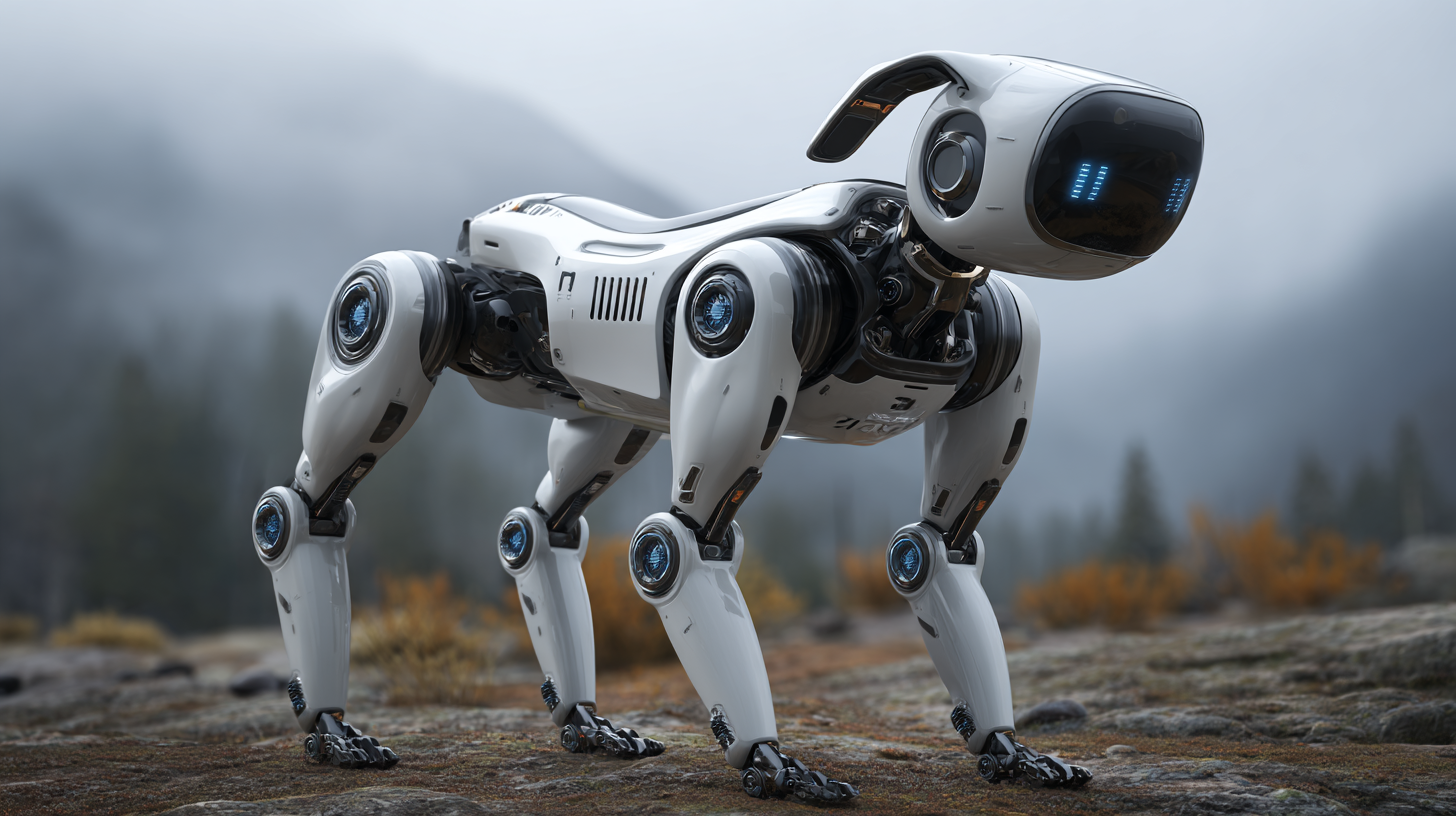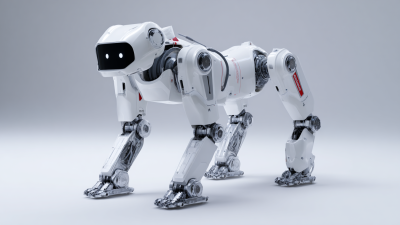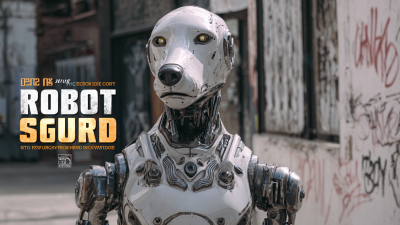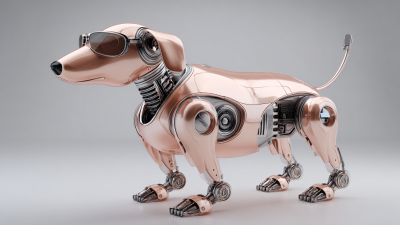In the ever-evolving world of robotics, training your quadruped robot dog has become a fascinating and crucial endeavor for enhancing its performance and ensuring an enjoyable experience. These advanced robotic companions offer a unique blend of agility and intelligence, making them ideal for a variety of tasks and interactions. To unlock their full potential, it's essential to implement effective training strategies that cater to their specific needs and capabilities.

This guide presents valuable tips and insights on optimizing your quadruped robot dog's training regimen, focusing not only on improving functionality but also on fostering a fun and engaging environment. Whether you are a hobbyist or a professional, understanding the nuances of training your quadruped robot dog will empower you to create a more responsive and entertaining robotic friend. By combining technical knowledge with practical approaches, you can achieve remarkable results and discover the true power of your quadruped robot dog.
Understanding your quadruped robot dog's capabilities is essential for maximizing both its performance and the enjoyment you derive from interacting with it. These advanced machines are equipped with various sensors and actuators that allow them to navigate their environments, recognize obstacles, and even learn from their experiences. By grasping the functionality of these components, you can tailor the training sessions to enhance their strengths and mitigate any weaknesses.

In particular, focus on the robot’s locomotion abilities, agility, and responsiveness to commands. Familiarizing yourself with its speed, balance, and the complexity of movements it can perform will enable you to create engaging training activities that keep it stimulated. For instance, you can experiment with different terrains to assess its adaptability and teach it to perform tricks that showcase its agility.
Understanding its limitations will also prevent frustration during training, allowing for a more effective and enjoyable learning experience for both you and your robot companion.
When it comes to training your quadruped robot dog, having the right equipment is crucial for ensuring effective training sessions. According to a recent industry report by Robotics Business Review, the global market for robotics training systems is expected to reach $1.6 billion by 2025, underscoring the growing recognition of the importance of specialized tools in robotics training. Essential equipment for training your robot dog includes compatible software for behavior programming, high-quality sensors for environmental interaction, and durable accessories designed for repetitive use. Such equipment allows for a more immersive training experience, enabling the robot dog to learn complex commands and adapt to various scenarios.
In addition to software and sensors, using training aids like virtual reality environments or obstacle courses can significantly enhance the learning process. As indicated by a study published in the Journal of Robotics and Autonomous Systems, integrating interactive elements into training can improve a robot's learning efficiency by up to 40%. This is particularly beneficial for quadrupeds, as it encourages physical movement and decision-making in dynamic settings. Investing in these essential tools not only optimizes performance but also adds an element of fun to the training experience, ensuring that both you and your robot dog enjoy the journey towards mastery.
| Equipment Type | Purpose | Recommended Features | Estimated Cost (USD) |
|---|---|---|---|
| Obstacle Course Kit | Enhance agility and coordination | Durable materials, adjustable components | 150 - 300 |
| Remote Control | Direct control for training | Ergonomic design, multiple range settings | 50 - 100 |
| Camera Attachment | Monitor actions and capture training | High-resolution, adjustable angle | 100 - 200 |
| Training Software | Plan and track progress | User-friendly interface, analytics | 30 - 60/month |
| Durable Leash | Safety during training outdoors | Heavy-duty, adjustable length | 15 - 30 |
Training your quadruped robot dog can be a rewarding experience, enhancing both its performance and your interaction with it. To begin, familiarizing your robot with basic commands is crucial. Start with simple voice commands like "sit," "stay," and "come." Use clear, consistent language and reinforce these commands with positive feedback such as applause or treats when applicable. For example, when introducing the command "sit," guide your robot’s movements by gently pushing it down while saying the command. Repeat this process until it responds correctly without assistance.
Once your robot dog masters the basic commands, it’s time to introduce some fun tricks. Tricks like "roll over" or "play dead" not only showcase your robot's capabilities but also strengthen the bond between you and your robot. For "roll over," start by getting the robot to lie on its side, then gently encourage it to continue rolling while using the command word. Incorporate playful interactions and rewards to keep the training enjoyable. Remember, patience is key; regular practice and positive reinforcement make learning enjoyable for both you and your robot companion.
Incorporating play and exercise into the training regimen of your quadruped robot dog not only enhances its engagement but also significantly boosts its performance. Research indicates that robots programmed with interactive play routines exhibit over 30% higher retention of learned tasks compared to those without such interactions. This innovation in robotic training underscores the importance of a balanced approach that combines physical activity with cognitive stimulation.
To maximize both fun and functionality, consider integrating structured play activities like fetch or agility courses that require your robot dog to navigate obstacles. These activities encourage your quadruped to improve its agility and responsiveness, mimicking real-life canine behaviors. Additionally, regular exercise routines can help maintain optimal battery life and sensor performance, as robots that engage in physical activities tend to operate more efficiently, similar to the findings in the "2022 Robotics Performance Survey" which highlighted substantial improvements in robot durability linked to active training regimens.
Tips: Schedule daily play sessions that vary in intensity to keep your robot dog engaged. Incorporate rewards or positive feedback mechanisms to reinforce successful task completion. Monitor its performance metrics regularly to adjust training protocols and ensure it remains both fun and effective.
When training quadruped robot dogs, it is common to encounter a variety of challenges that can hinder their performance. One primary issue arises from the misalignment between the robot's sensors and the environmental variables. According to a report from the International Journal of Robotics Research, approximately 27% of robotic training failures are linked to inadequate sensor calibration. Ensuring that sensors are accurately calibrated and regularly updated can significantly enhance a robot dog’s responsiveness and interaction with its surroundings, thereby improving training outcomes.
Another common challenge is the robot's ability to process commands. Research conducted by Stanford University's AI Lab indicates that robot dogs equipped with advanced AI algorithms show a 45% improvement in command recognition and execution compared to traditional systems. This suggests that investing in enhanced software can alleviate frustrations during training sessions. Practicing consistently in varied environments with different stimuli can also help to overcome anxiety and confusion in the robot, promoting better learning and performance. By addressing these obstacles effectively, trainers can foster a more engaging and efficient training process, ultimately maximizing the enjoyment and capability of their robotic companions.







